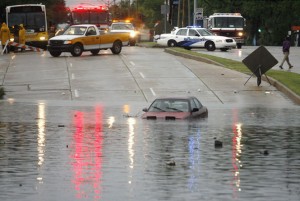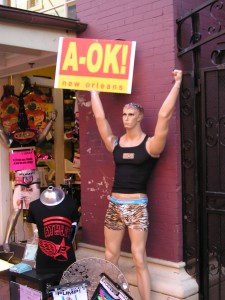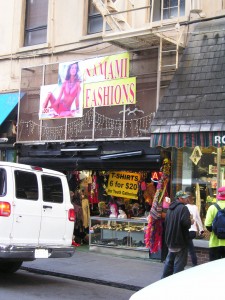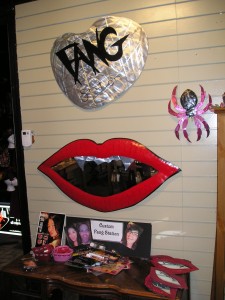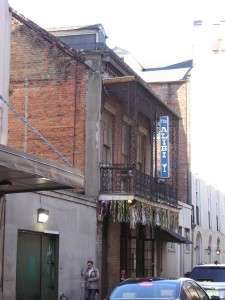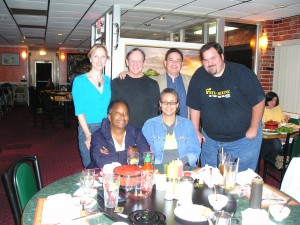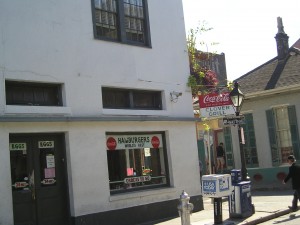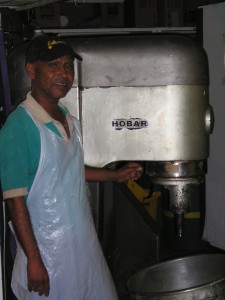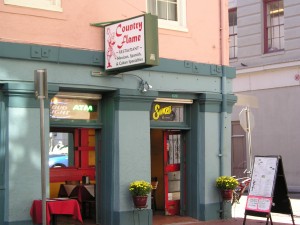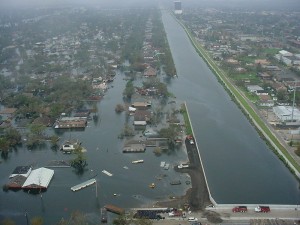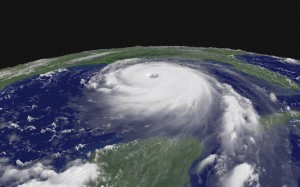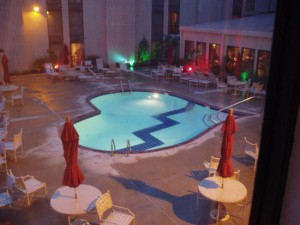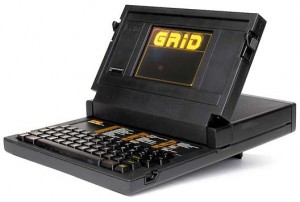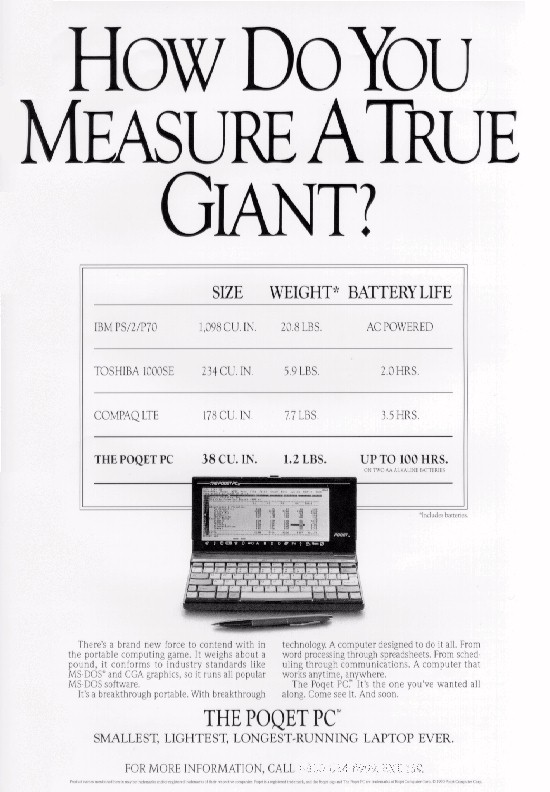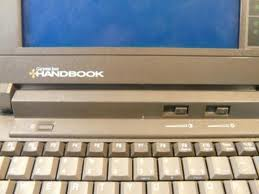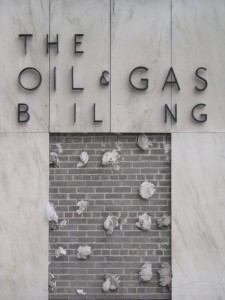
The oil and gas industry in New Orleans isn't what it once was; much of it has moved to Houston
I worked in New Orleans’ Central Business District for nearly twenty years. For the first fifteen I worked at the old State Office Building on Loyola Avenue, surrounded by City Hall, Charity Hospital, the Main Downtown Branch of the New Orleans Public Library, and the Downtown/Superdome Holiday Inn, formerly the Howard Johnson’s. Later I worked for the Federal Emergency Management Agency’s (FEMA) Gulf Coast Recovery District, then the Louisiana Transitional Recovery Office, headquartered at 1250 Poydras Street, at the corner of Poydras and Loyola Avenue.
So I have a lot of personal history with that area. A work trip brought me back this past week to 1250 Poydras, to support some sessions of computer training for federal field agents. Some things hadn’t changed, as some things seem to never change in New Orleans. Other things had changed quite a lot.
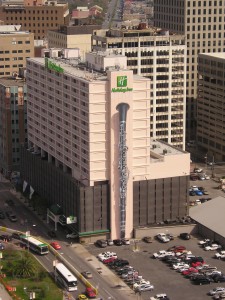
The Downtown/Superdome Holiday Inn, famous for its clarinet mural; once, when a Howard Johnson's, infamous for being the site of a sniper's rampage
Things that haven’t changed? The Downtown/Superdome Holiday Inn where I used to park while working at the Office of Public Health still has its eighteen-story tall mural of a clarinet and its garage level murals of the Faubourg St. Mary neighborhood as it appeared just before the Civil War. Before it became a Holiday Inn, it was a Howard Johnson’s, infamous as the site of Mark Essex’s killing spree on January 7, 1973. Essex, a member of the Black Panthers, carried out his first killings a week earlier, on New Year’s Eve, 1972, when he murdered two police officers with a sniper’s rifle. On January 7, he invaded the Howard Johnson’s, killed two white tourists at random and shot the manager and assistant manager of the hotel; both died. Essex died himself from at least one of nearly two hundred gunshot wounds he suffered on the roof of the hotel, as he engaged in a gun battle with police overhead in a Marine helicopter and sharp shooters stationed on the roofs of adjacent high rises (one of which is currently in the process of being demolished; it is the derelict white building, minus all its windows, behind the current Holiday Inn; it used to be a fashionable office building, then an apartment building, but it has stood derelict and abandoned as long as I can remember). For the full story of Mark Essex’s life and murderous rampage, check out A Terrible Thunder: the Story of the New Orleans Sniper, by journalist Peter Hernon.
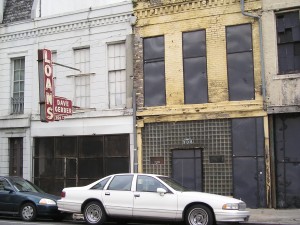
Nineteenth century commercial buildings on South Rampart Street, empty since the 1990s
A row of nineteenth century commercial buildings still stands at the corner of South Rampart and Gravier Streets, behind the Holiday Inn. I used to walk past them every weekday on my way to lunch at a bagel shop on Carondolet Street (I read the New Yorker article on a pair of rival liposuctionists which inspired me to write The Good Humor Man, or, Calorie 3501 at that bagel shop). They were unused then, twenty years ago. They are still unused today. Handsome buildings. I wish someone would figure out something to do with them (aside from demolish them for surface parking lots, which that side of downtown is full of).
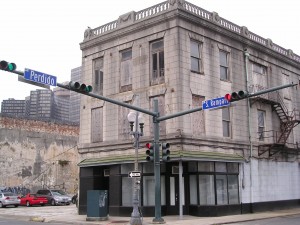
The intersection of Perdido Street and South Rampart Street, one of the few remaining buildings significant to the early history of jazz
Then there’s the building at the corner of Perdido and South Rampart Streets — the home of the Eagle Saloon and Oddfellow’s Hall, perhaps the most important surviving building in the history of early jazz music in New Orleans. Buddy Bolden, Louis Armstrong, and Buddy Petit all played there. All of the building’s neighbors have been demolished, so it sits like an island of musical and cultural history, gathering dust. Back when I was working in the neighborhood, the empty building sported signs announcing that it would soon be restored as part of a jazz museum and cultural center. The signs came down sometime after Hurricane Katrina. Now it just sits there, empty, with apparently no renovation plans afoot, in danger of becoming yet another surface parking lot.
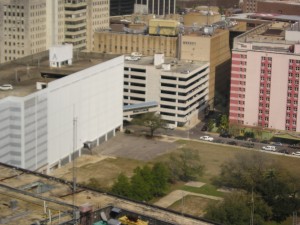
That empty rectangle between the white parking garage and the trees of Duncan Plaza is where I worked for fifteen years
The things that have changed? Some of the things I remember are now gone. I spent so much time at the State Office Building on Loyola Avenue, headquarters for the Louisiana Office of Public Health, between 1992 and Hurricane Katrina that the old 1950s government building felt like a second home. I applied for two marriage licenses on the building’s first floor. I organized the New Year Coalition to stop holiday gunfire and wrote portions of my first four horror and science fiction novels either in the building or in coffee shops and food courts within a block or two of my office. After the levees broke following Hurricane Katrina, the tunnel that connected the State Office Building with Charity Hospital a block away flooded. The flooding caused the water pressure in my building to surge, resulting in all the toilets and sinks on the first four floors overflowing for several weeks. One of my first duties upon returning to New Orleans after the storm was to help evacuate the stricken building of all essential equipment and files. The State Department of Health and Hospitals did nothing to try to save the building from mold and decay while they negotiated with FEMA regarding having the federal agency pay for demolition and construction of a new state office building. After four years of wrangling, FEMA agreed to pay for the demolition, but not for reconstruction. My old department now plans to lease space in an office tower adjacent to the Superdome that is owned by Saints owner Tom Benson. The old building was in the process of being demolished when I left New Orleans in the summer of 2009. Now its footprint is an empty slab of concrete and grass, which I was able to look down upon from the training room I visited on the twenty-third floor of the 1250 Poydras building. It was a disorienting feeling to look down on an empty space where so much of my adult life had unfolded. This was once Louis Armstrong’s childhood neighborhood. Most of its homes were torn down to construct the city’s government center. Now portions of the government center are coming down… to be replaced with what? I’m sure many in city and state government now wish they would have preserved the Armstrong family home.
I remember a stately row of nineteenth century commercial storefronts on Common Street between South Rampart Street and University Place, one of which had been the first photography studio owned by an African-American photographer in New Orleans. Its last commercial use, if I remember right, had been a shoe store. A few years before I left the city, when the building’s owner announced it would be demolished (to be replaced by a parking garage, of course), there was a push in the historic preservation community to have it declared a landmark, but the effort failed. There is no garage there now, just an empty patch of grass… and one of the strangest public artworks I’ve ever come across, a group of French Quarter-style street lamps twisted together into a giant street lamp tarantula.
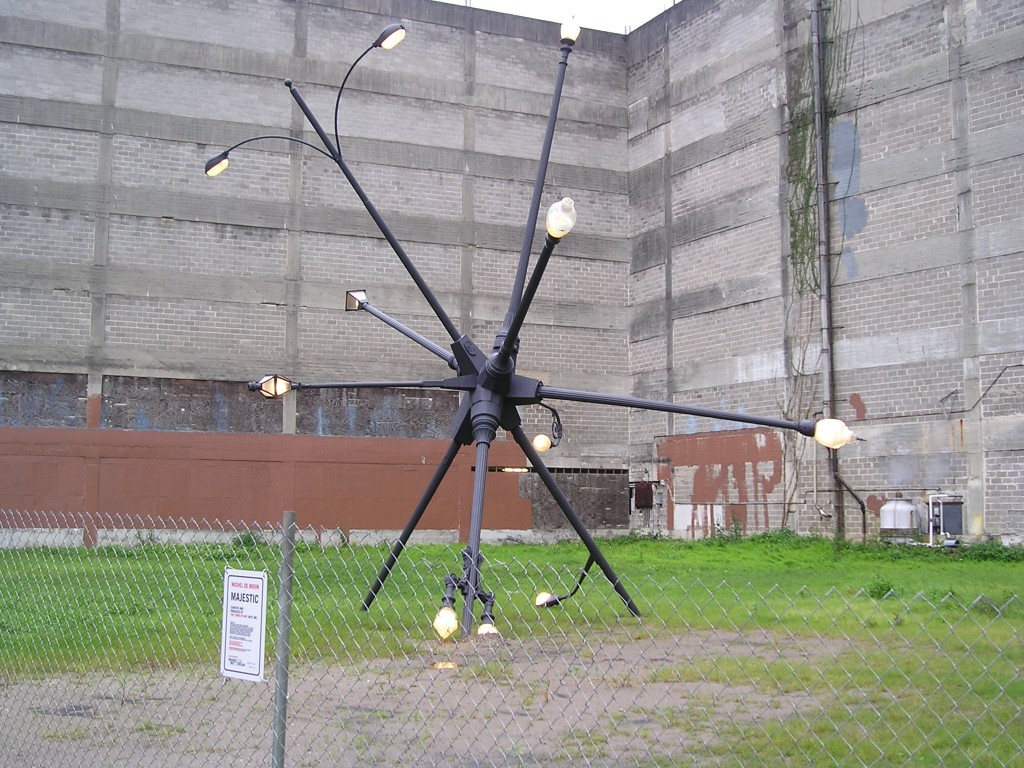
There used to be a late nineteenth century block of storefronts on this lot; now there's a patch of grass and a street lamp tarantula
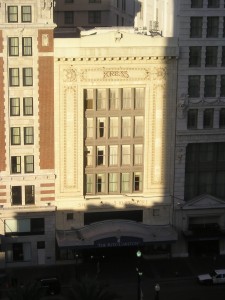
The view out my hotel window: the old Kress Five and Dime, now the Ritz Carlton Hotel
A few things in the neighborhood have changed for the better. The old Kress Five and Dime Store, underutilized or empty for a number of years, is now home to Ritz Carlton Hotel. The wonderful old Joy Theater reopened this past December; once the largest movie theater on Canal Street, it is now a performing arts venue. Canal Street now boasts a handsome International House of Pancakes, probably the most attractive restaurant in the entire chain.
Some things which haven’t changed since I moved away are things I wish would change, however — like the Orpheum Theater across the street from the Roosevelt Hotel where I stayed, once the home of the New Orleans Symphony, which flooded after Hurricane Katrina and now sits defaced with graffiti, or the Saenger Theater, whose renovation and reopening have been stalled by bureaucratic red tape and political infighting. I hope the Joy (and perhaps the Saenger across the street) can be a catalyst for the redevelopment of the western/lake side of downtown Canal Street, which appears more neglected, shoddy, and abandoned than at any other time I can remember.
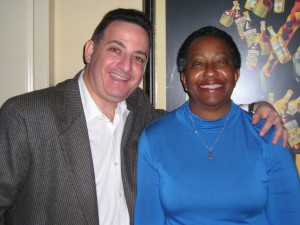
Me with Marian Moore, New Orleans science fiction writer and the Krewe de Jieux's Jewish American Princess for 2012
The best things that remain for me in New Orleans, though? Those would be my friends. I enjoyed dinners with several of my oldest friends from my time in the city, including Dr. Leslie Lyons, with whom I attended Loyola, Kat B. Kay, fellow science fiction fan and congregant at Shir Chadash, and Marian Moore, one of the longest serving members of George Alec Effinger’s writing critique group, and an impressive science fiction writer in her own right. I miss all of my New Orleans friends very much, and I’m fortunate that my work allowed me to pay some of them a visit. Maybe the next time I go down I’ll be able to bring my boys, all of whom were born in the Crescent City. Asher, in fact, was born on the Saturday before Fat Tuesday; we nearly named him Endymion, because the parade traffic that snarled the Mid-City and Broadmoor neighborhoods almost kept us from reaching Baptist Hospital in time for Dara to deliver. The 2012 Endymion parade rolled two days after I returned to Virginia this past week, on a rainy Saturday.
Like this:
Like Loading...

